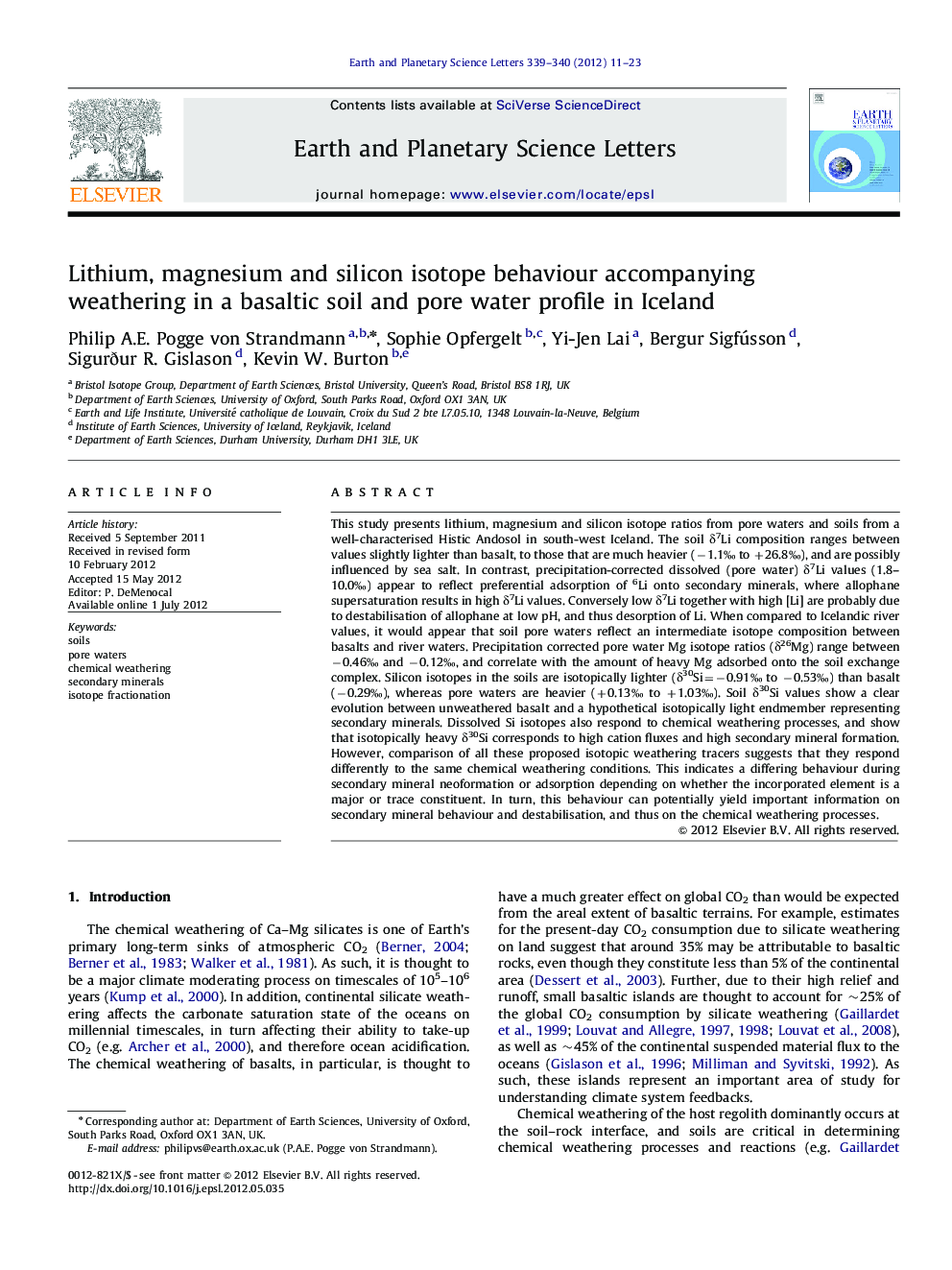| کد مقاله | کد نشریه | سال انتشار | مقاله انگلیسی | نسخه تمام متن |
|---|---|---|---|---|
| 4677420 | 1634801 | 2012 | 13 صفحه PDF | دانلود رایگان |

This study presents lithium, magnesium and silicon isotope ratios from pore waters and soils from a well-characterised Histic Andosol in south-west Iceland. The soil δ7Li composition ranges between values slightly lighter than basalt, to those that are much heavier (−1.1‰ to +26.8‰), and are possibly influenced by sea salt. In contrast, precipitation-corrected dissolved (pore water) δ7Li values (1.8–10.0‰) appear to reflect preferential adsorption of 6Li onto secondary minerals, where allophane supersaturation results in high δ7Li values. Conversely low δ7Li together with high [Li] are probably due to destabilisation of allophane at low pH, and thus desorption of Li. When compared to Icelandic river values, it would appear that soil pore waters reflect an intermediate isotope composition between basalts and river waters. Precipitation corrected pore water Mg isotope ratios (δ26Mg) range between −0.46‰ and −0.12‰, and correlate with the amount of heavy Mg adsorbed onto the soil exchange complex. Silicon isotopes in the soils are isotopically lighter (δ30Si=−0.91‰ to −0.53‰) than basalt (−0.29‰), whereas pore waters are heavier (+0.13‰ to +1.03‰). Soil δ30Si values show a clear evolution between unweathered basalt and a hypothetical isotopically light endmember representing secondary minerals. Dissolved Si isotopes also respond to chemical weathering processes, and show that isotopically heavy δ30Si corresponds to high cation fluxes and high secondary mineral formation. However, comparison of all these proposed isotopic weathering tracers suggests that they respond differently to the same chemical weathering conditions. This indicates a differing behaviour during secondary mineral neoformation or adsorption depending on whether the incorporated element is a major or trace constituent. In turn, this behaviour can potentially yield important information on secondary mineral behaviour and destabilisation, and thus on the chemical weathering processes.
► δ7Li, δ26Mg, δ30Si in a basaltic soil and pore water profile.
► Combined Li and Si isotopes provide information of clay neoformation vs. adsorption.
► δ7Li tracks entire weathering process from basalt to river waters via soils and pore waters.
► δ26Mg fractionated by adsorption onto soil exchange complex, and not by neoformation.
Journal: Earth and Planetary Science Letters - Volumes 339–340, 15 July 2012, Pages 11–23